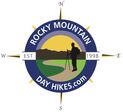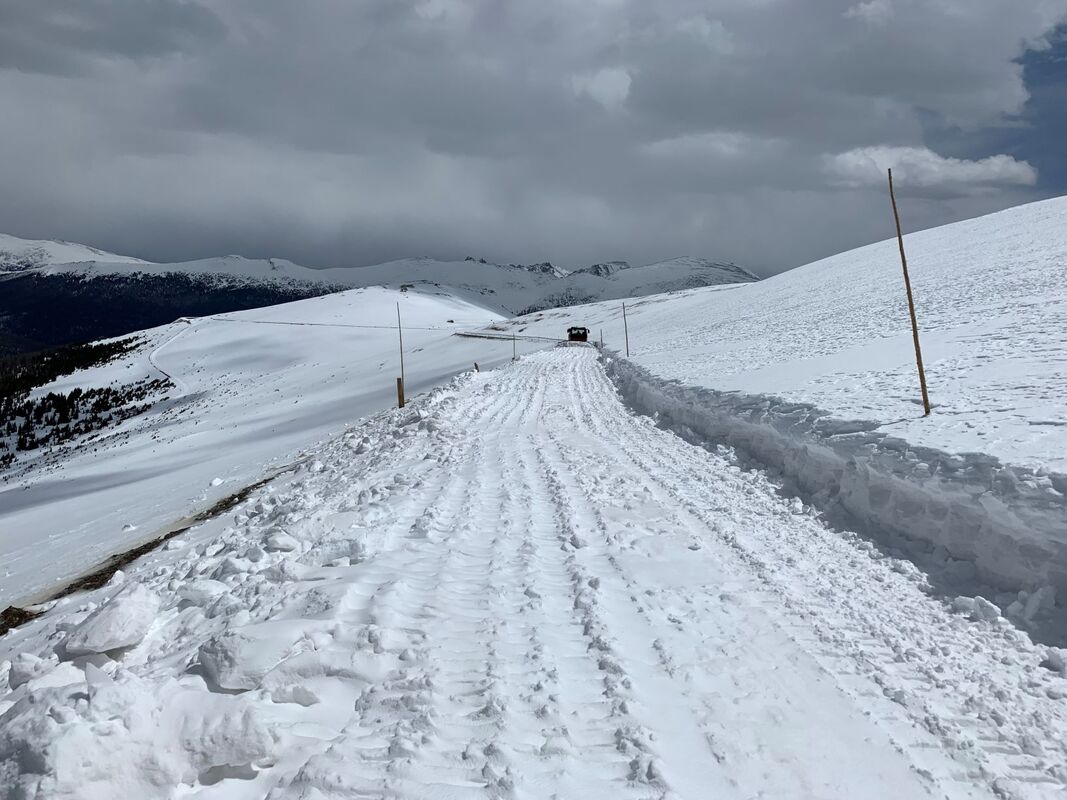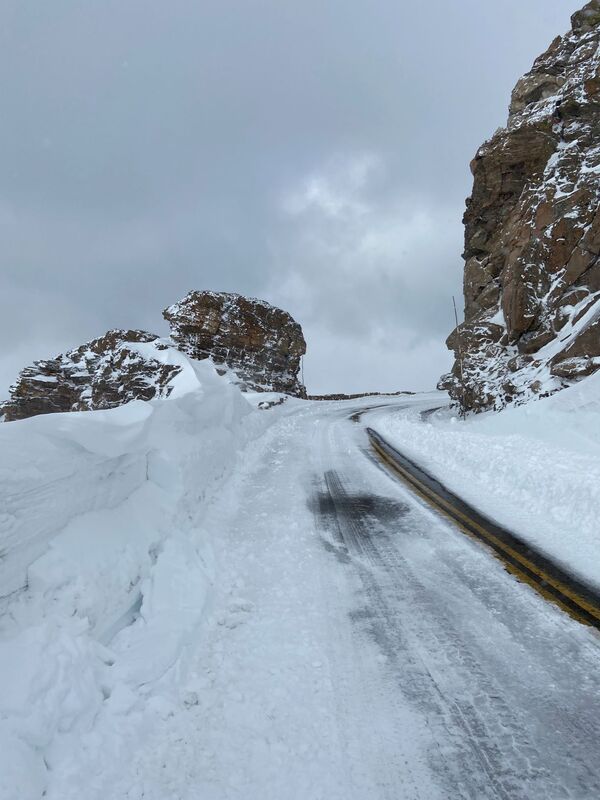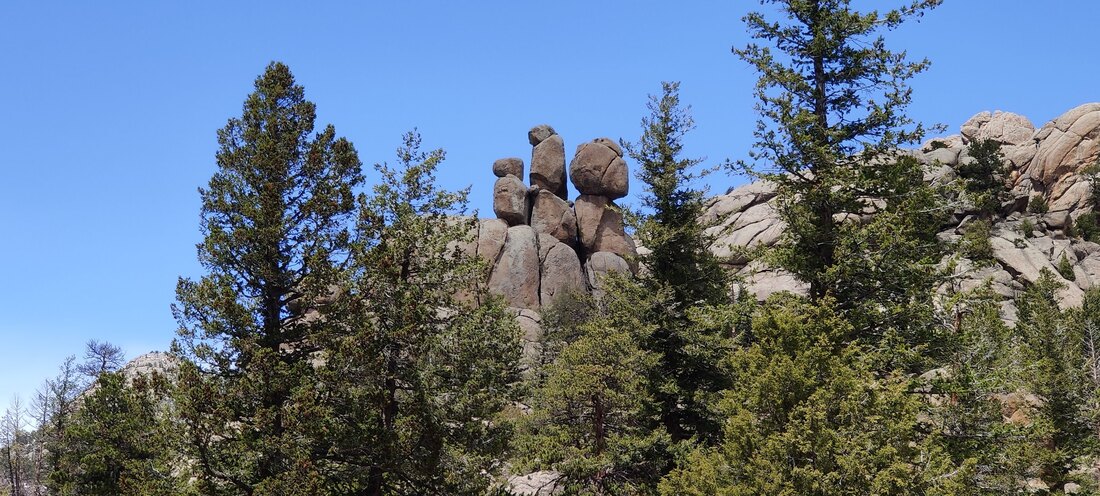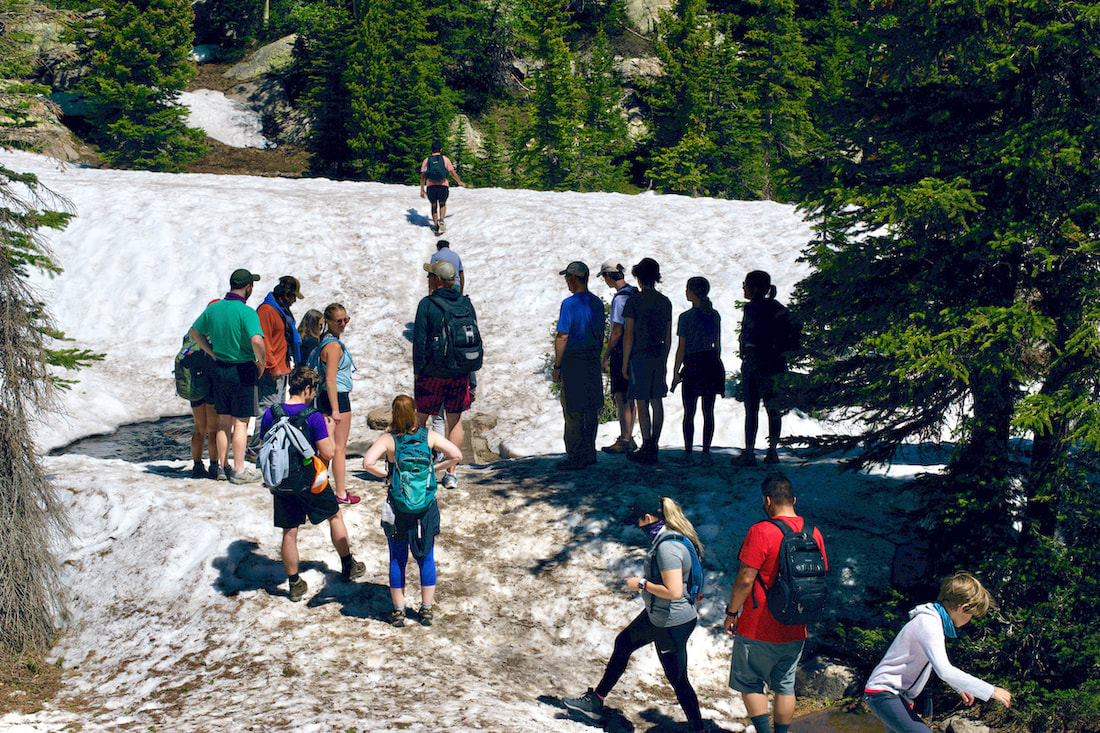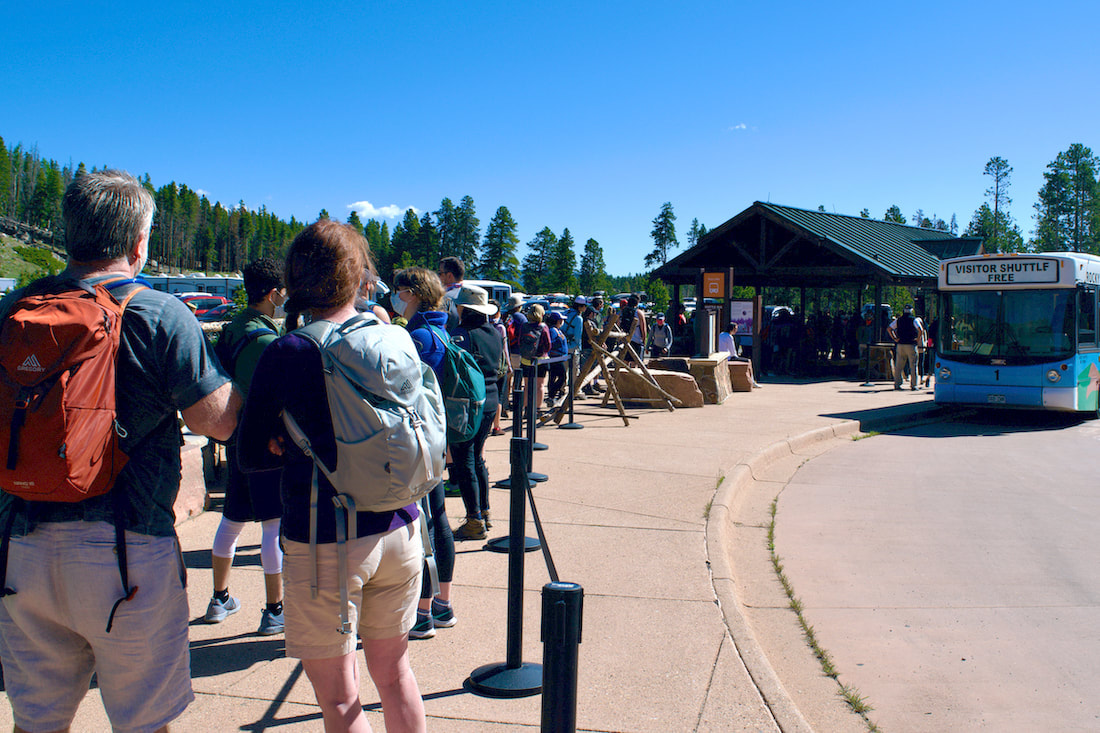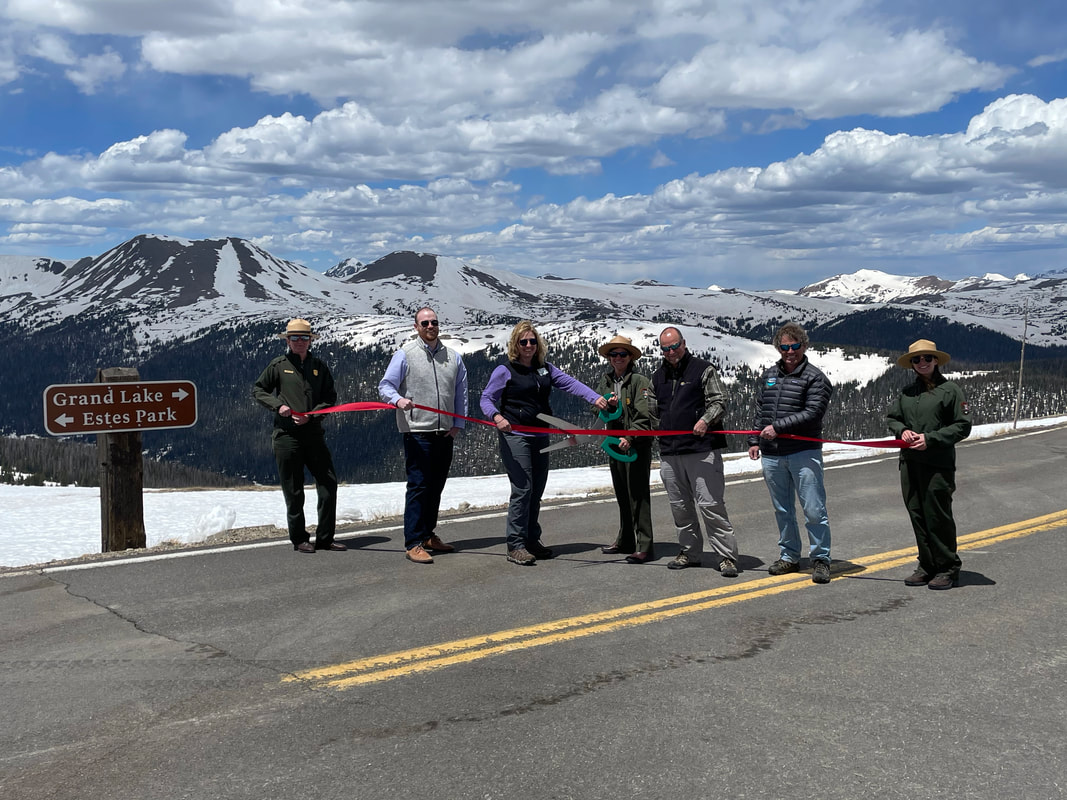 Yesterday afternoon, local officials Travis Machalek, Estes Park Town Administrator, Jody Shadduck-McNally, Larimer County Commissioner, Steve Kudron, Grand Lake Mayor, and John Crone, Grand Lake Town Manager join RMNP Superintendent Darla Sidles and other park staff to cut the ribbon to open Trail Ridge Road for the season. The annual ceremonial ribbon cutting, highlighting the importance of Trail Ridge Road in connecting the towns of Grand Lake and Estes Park, was more poignant than ever. Trail Ridge Road never reopened after October 21 of last year, when the East Troublesome Fire ran 18 miles in one day, significantly impacting the Grand Lake community, continuing its run east, jumping 1.5 miles of tundra on the Continental Divide and causing major evacuations in the Estes Park community. After the fire, a major snowstorm caused the road to be closed for the season. RMNP Press Release - May 28, 2021 This afternoon, Trail Ridge Road in Rocky Mountain National Park opened for the season. Due to melting snow on the road and the potential for freezing temperatures visitors should be prepared for icy conditions. Winter weather is forecast for higher elevations later this holiday weekend. Park visitors should be prepared to adjust travel plans accordingly and are encouraged to call the park’s Trail Ridge Road recorded phone line at (970) 586-1222. Park staff will update the recorded line when/if the road status changes. Alpine Visitor Center and Trail Ridge Store are scheduled to open tomorrow, Saturday, May 29. Timed Entry System Effective May 28 Rocky Mountain National Park has implemented a temporary timed entry permit reservation system which began today, May 28. Park staff are managing for significant increases in visitation to public lands in Colorado, including Rocky Mountain National Park, along with continued Covid-19 concerns, ongoing park seasonal staff shared housing challenges, and residual fire impacts in some areas of the park from historic fires in 2020. There are two types of reservations available. One permit is for the Bear Lake Road Corridor, which includes the entire corridor and access to the rest of the park. This reservation period is from 5 a.m. to 6 p.m. The second permit is for the rest of Rocky Mountain National Park, excluding the Bear Lake Road corridor, and includes Trail Ridge Road. This reservation period is from 9 a.m. to 3 p.m. Permits issued using the reservation system will allow park visitors to enter the park within two-hour windows of availability. The reservation system will apply to all areas of the park. To learn more visit https://www.nps.gov/romo/planyourvisit/timed-entry-permit-system.htm Trail Ridge Road historically opens on Memorial Day weekend; last year the road opened on June 3, due to a late May snowstorm. The earliest the road has opened was on May 7, 2002; the latest June 26, 1943. Trail Ridge Road is the highest continuous paved road in the United States, climbs to 12,183 feet and connects the towns of Estes Park and Grand Lake. Trail Ridge Road officially closed for the season last year on October 31. National Park Service plow operators began clearing the snow in the middle of April. Crews from the west side of the park and crews from the east side of the park move along the road and eventually meet at the Alpine Visitor Center. The visitor center is the highest in the National Park Service, sitting at 11,796 feet above sea level. Spring storms often impact plowing activities. This year, crews ran into average or above average snowpack on the east side of the Continental Divide and lower than average snowpack on the west side of the Continental Divide. For more information about Rocky Mountain National Park visit www.nps.gov/romo or call the park’s Information Office at (970) 586-1206. For a recorded status line on Trail Ridge Road please call (970) 586-1222. -NPS- The Alpine Visitor Center (left) and Rock Cut (right) on May 14, 2021. RMNP photos
0 Comments
RMNP Press Release - May 18, 2021
On Thursday afternoon, May 13, park rangers at Rocky Mountain National Park responded to cell phone reports from park visitors who indicated there was a man running down the Gem Lake Trail, toward the Lumpy Ridge Trailhead parking area, yelling that he was being chased by someone with a rifle. While rangers were responding to the area, they received an additional report about a woman who had been knocked down on the Gem Lake Trail by a man running down the trail. Once on scene, park rangers began to search the area and approximately 400 yards from the trailhead, they located a male subject sitting on the trail who appeared to be injured. It was determined this person was the man who was reportedly running down the trail. He appeared to be under the influence of an unknown substance. Rangers detained this subject, who was combative. He was ultimately transported by ambulance to Estes Park Health for treatment. A short time later, the injured woman hiked to the parking area with help from Good Samaritan park visitors. She was treated for her injuries at the trailhead and transported by ambulance to Estes Park Health. While additional information was being gathered, rangers, with assistance from the Estes Park Police Department K-9 Unit, continued to search the Gem Lake Trail for any indication of firearm use and/or any other persons of interest based on reported descriptions. It was determined a group of three males were together for a hike at Lumpy Ridge, including the subject. The remaining two males were subsequently contacted on the Gem Lake Trail and escorted to the parking area. The hospitalized male was determined to be under the influence of narcotics. No weapons were found in the area and there were no additional reports of a person carrying a rifle. Rangers contacted approximately 30 people on the trail who stated they did not hear any gunshots or see an armed individual during their visit to the area. The case is under investigation and park rangers are working with the United States Attorney’s Office on charges. No further information is available at this time. RMNP Press Release, May 6, 2021 Rocky Mountain National Park staff are seeking the public’s engagement and input on the park’s long-range Day Use Visitor Access Strategy. “We are eager to continue engaging with our stakeholders and connect with park visitors from near and far, to help identify shared values, clarify key issues, and begin to develop potential management strategies to help the park prepare for our long-term day use strategy” said Park Superintendent, Darla Sidles. “We hope to hear from current park visitors as well as those who have told us they no longer visit Rocky Mountain National Park because of crowding and congestion.” Public comments are invited for sixty days beginning May 21 through July 19, 2021. Rocky Mountain National Park has experienced a 44 percent increase in visitation since 2012. Rapid growth in day use visitation and changing use patterns in the park have degraded natural and cultural resources, diminished quality of the visitor experience, increased visitor and staff safety concerns, and created a heavy strain on the park’s facilities and ability to perform daily operations. The purpose of the Rocky Mountain National Park Day Use Visitor Access Strategy is to provide visitor access in a way that enhances the protection of the fundamental resources and values for which the park was created. The goal of the process is to identify strategies that will help protect park resources, offer varied opportunities for high quality visitor experiences, enhance visitor and staff safety, and coincide with the park's operational capacity. The park is hosting two virtual public meetings regarding this strategy on Thursday, May 20, from 6:00 p.m. to 7:30 p.m. and on Tuesday May 25, from 2:00 p.m. to 3:30 p.m. The content is the same for both meetings, so participants only need to attend one. The intent of the webinars is to provide opportunities for the public to learn more about the purpose of the project, key issues, desired conditions for day use visitor access, potential management strategies, ask questions of NPS staff and get information on how to provide formal written comments through the Planning, Environment and Public Comment (PEPC) website. Each webinar will begin with a presentation, followed by a question and answer session.
To participate in the virtual meetings, please register at one of the following links. After registering, you will receive a confirmation email containing information about joining the webinar. It is recommended to join the webinar via computer to have full use of the webinar tools that GoToWebinar provides. Public Webinar #1, Thursday, May 20, 2021 6:00 PM Registration URL https://attendee.gotowebinar.com/register/3810578962321936142 Public Webinar #2, Tuesday, May 25, 2021 2:00 PM Registration URL https://attendee.gotowebinar.com/register/2324908955266371342 Unable to attend a virtual meeting? A recording of both meetings will be posted on the park planning link below. The park will provide live captioning of the meetings. Park staff encourage public participation throughout the planning process. There will be additional opportunities to comment formally on the project during the future NEPA process. Public comments for this stage are invited for sixty days beginning May 21 through July 19, 2021. Comments can be submitted online beginning May 21, by visiting https://parkplanning.nps.gov/ROMO_Duvas click on ‘Open for Comment’ on the left side of page to submit a comment. Comments may also be sent to the following mailing address: Superintendent Rocky Mountain National Park 1000 US Highway 36 Estes Park, CO 80517 Before including your address, phone number, e-mail address, or other personal identifying information in your comment, you should be aware that your entire comment – including your personal identifying information – may be made publicly available at any time. Although you can ask in your comment to withhold your personal identifying information from public review, we cannot guarantee we will be able to do so. If you have questions about the project or would like more information about Rocky Mountain National Park, please visit www.nps.gov/romo or call the park’s Information Office at (970) 586-1206. USFS Press Release FORT COLLINS, Colo. (May 4, 2021) -- Arapaho and Roosevelt National Forests and Pawnee National Grassland managers are exploring new strategies to help visitors have safe and enjoyable outdoor experiences this summer while protecting wildlife, clean water and healthy forests. From selling passes online for the most popular developed recreation areas to shifting some of the most visited areas to day-use only, National Forest managers are planning for another very busy recreation season amidst an ongoing worldwide pandemic.
“For outdoor recreationists, the most important message this year is to ‘Know Before You Go,’ said recreation program manager Erich Roeber. “Just like you might plan a family vacation or research a product before purchasing, public lands visitors really need to do their homework this year before they head out on an adventure. Otherwise, they might show up somewhere and realize they needed to buy a pass in advance, or book a reservation, or that they can’t camp in the same exact place where they camped last year.” 2020 brought a 200% increase in outdoor recreation across Colorado’s northern Front Range, with a large number of first-time visitors seeking an escape from the constraints of social distancing. This resulted in long lines and wait times at welcome stations, overflowing parking at trailheads, and cars parked unsafely for miles along county roads, obstructing roadways. To reduce crowding at welcome stations, restrooms and parking areas this year, the Forest is developing a timed-entry pass system for Mount Evans and Brainard Lake. While the project is still in development, all pass sales will occur online on Recreation.gov and passes are expected to be available to purchase beginning in late May. Mount Evans is tentatively scheduled to open June 4 and the Brainard Lake welcome station is tentatively scheduled to open June 11. Outside of developed campgrounds, National Forest visitors created thousands of new campsites as they pulled off roads and damaged resources, trampling vegetation and compacting soils with tents, campers and vehicles. Visitors built hundreds of new rock campfire rings and negatively impacted municipal water supplies with human waste and trash. To help some of these trampled places heal, the Forest is working closely with local county officials to target a few areas for temporary “day-use-only” designations this year. Recreation staff will use the opportunity to explore more sustainable options for managing these places into the future. 2020 was also a bad year for human-wildlife interactions as bears entered campsites and tents in areas where visitors hadn’t properly stored their food. To help keep Colorado’s wildlife wild and reduce unwanted encounters, the forest is collaborating with Colorado Parks and Wildlife in developing food storage requirements for visitors across the Forest. Most notably, 2020 was a year during which human-caused wildfires burned 25 percent of the Arapaho and Roosevelt National Forests, devastating communities, destroying homes and taking lives. The Forest and our communities are still healing from these fires. Recovery is expected to take years. As soon as the snow melts, Forest personnel will be heavily focused on assessing and stabilizing the burned areas; and the burned areas are expected to remain largely off limits to the public until critical life-safety road and trail stabilization needs can be addressed. Unfortunately, much of Colorado is still in some degree of drought, ranging from severe to exceptional. While precipitation has improved this spring, it may not bring enough moisture to prevent large logs and trees from catching fire easily. Due to this danger, compounded by the increase in visitors, the Forest is working closely with its state and local partners to determine the best time to implement fire restrictions as temperatures warm up. Regardless of when fire restrictions go into place, the public is urged to be extremely cautious with all potential sources of ignition this year. More information will be shared in the weeks to come as the Forest works with its community partners and public lands neighbors across the northern Front Range and Grand County to finalize these plans. In the meantime, get the most accurate recreation information by checking official Know Before You Go resources on the local National Forest website and elsewhere. In addition to weather forecasts and road and trail conditions for the area, visitors should be sure to research how to buy passes, how to find campsites, and whether campfires are allowed. Please be safe out there this summer. #CareforColorado and #RecreateResponsibly Beginning May 16 through September, major road construction will occur again on US 36 inside of Rocky Mountain National Park. The work will take place on a 3-mile section of US 36, just west of Bear Lake Road junction to east of Deer Ridge Junction. Beginning on May 16, this section of road will be closed nightly from 7 pm to 7 am, Sunday nights through Friday mornings. There will be no nightly closures on Friday and Saturday nights.
When the road reopens each morning at 7 am to traffic, motorists should expect delays and a rough surface. Bicyclists and motorcyclists should avoid this section of road this summer and enter the park through the Fall River Entrance. Sections of asphalt will be removed and a new surface will be installed. Many curves will be reconstructed to bring them into compliance with federal highway standards. Upper Beaver Meadows Road will also be inaccessible during nightly closures. For further information on Rocky Mountain National Park, please visit www.nps.gov/romo or call the park’s Information Office at (970) 586-1206. |
RMNP UpdatesPress Releases from Rocky Mountain National Park and the Rocky Mountain Conservancy.
Archives
September 2025
|
© Copyright 2025 Barefoot Publications, All Rights Reserved
